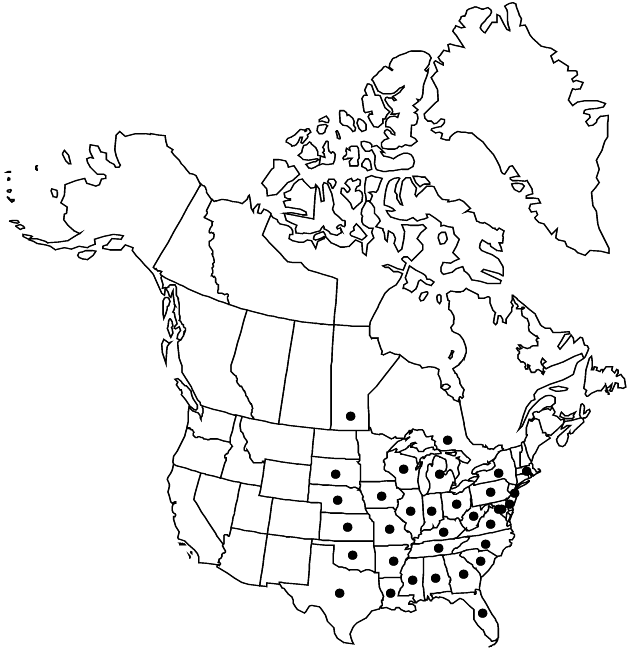Lactuca floridana
Fruct. Sem. Pl. 2: 362. 1791.
Annuals or biennials, 25–150 (–200+) cm. Leaves on proximal 2/3–3/4 of each stem; blades of undivided cauline leaves oblong, ovate, or elliptic, margins entire or denticulate, midribs sometimes sparsely pilose. Heads in (± pyramidal) paniculiform arrays. Involucres (8–) 10–12+ mm. Phyllaries usually reflexed in fruit. Florets 10–15 (–25+); corollas bluish or whitish, seldom deliquescent. Cypselae: bodies brown (often mottled), ± compressed-lanceoloid to fusiform, 4–5 mm, beaks ± stout, 0.1–0.5 (–1) mm, faces 5–6-nerved; pappi white, 4–5 mm. 2n = 34.
Phenology: Flowering (Jun–)Aug–Sep(–Oct).
Habitat: Moist to wet places, margins of thickets and woods
Elevation: 10–200 m
Distribution

Man., Ont., Ala., Ark., Del., D.C., Fla., Ga., Ill., Ind., Iowa, Kans., Ky., La., Md., Mass., Mich., Miss., Mo., Nebr., N.J., N.Y., N.C., Ohio, Okla., Pa., S.C., S.Dak., Tenn., Tex., Va., W.Va., Wis.
Discussion
The “double” pappi of Lactuca floridana (and L. biennis) are very similar to pappi found in species assigned to Cicerbita Wallroth (ca. 35 spp., Europe, Asia, Africa). Return of the species to Cicerbita as C. floridana (Linnaeus) Wallroth may have merit.
Selected References
None.
Lower Taxa
"fine" is not a number.